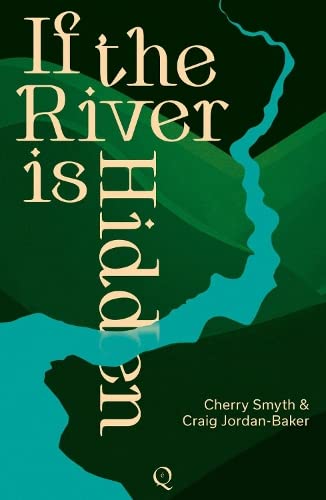
There are books you’re meant to find. So it seemed to me recently with one I came across in Kemptown, in Brighton. I’d seen the Kemptown Bookshop mentioned in a roundup of independents in a piece in The Observer in December. I liked the sound of it, so I made a note to pop in next time I was in the city.
The Sunday before last, I acted on that note. As the Observer piece says, it’s a “three-storey, bow-fronted shop”— though not quite as roomy as that might suggest. There’s no space to pass others on the stairs, and if someone’s having a coffee at the table at the far end of the room on the first floor, you might not be able to sidle behind to browse in the poetry section. But it’s a warm and welcoming place.
On the ground floor, as I looked over a section dedicated to local writers, my eye fell on a slim little book (fewer than 120 pages) titled If the River is Hidden, which, the blurb on the back told me, “charts the journey of two writers from the source to the mouth of the Bann, Northern Ireland’s longest river”. Dipping inside, I read the first line of the preface: “She is driving south down the A26 from Portstewart…”
Portstewart is my home town, and the Bann enters the sea at the Barmouth, at the end of the Strand, which is one of my favourite places to run — a place where, I’ve sometimes joked, I want my ashes scattered when I’ve run out of time. How, I wondered, had I missed this book, which came out in 2022?
It’s an innovative collaboration, in poetry and prose, between Cherry Smyth, who grew up in a Protestant family in Portstewart, and Craig Jordan-Baker, who was born in Southampton but had an Irish Catholic grandfather who was raised alongside the river — “in Banbridge town, in the County Down”, as the song has it. Smyth now lives in London, Jordan-Baker in Brighton (hence the book’s appearance with the work of “Local Writers” in the Kemptown shop). She felt that if she was to thrive she would have to leave Northern Ireland; he felt from an early age that he didn’t really belong in England. Together they follow the Bann for its 83 miles, from the Mourne Mountains, through Lough Neagh, to the Atlantic, taking the river, as Smyth puts it, “…through a homeland/ he can’t quite claim and I can’t quite renounce”.
The book is a subtle and attentive portrait of a waterway and the land it runs through; a waterway that’s barely noticed by some who live close by. It’s an inquiry, too, into how we’re shaped by home and roots. It seamlessly embraces myth and legend, history and politics, travel and memoir (and, according to the publisher’s classification, “Fiction”). There are times on the journey when the writers, thanks to man’s handiwork, are driven from the waterside and find that the river is, indeed, hidden. There are moments, too, when, because of the terrain they’re on, or the town they’re in, they are disappointed. Readers won’t be. Having whistled through this miniature marvel once, I’m now following the course, more slowly, again.

Leave a Reply